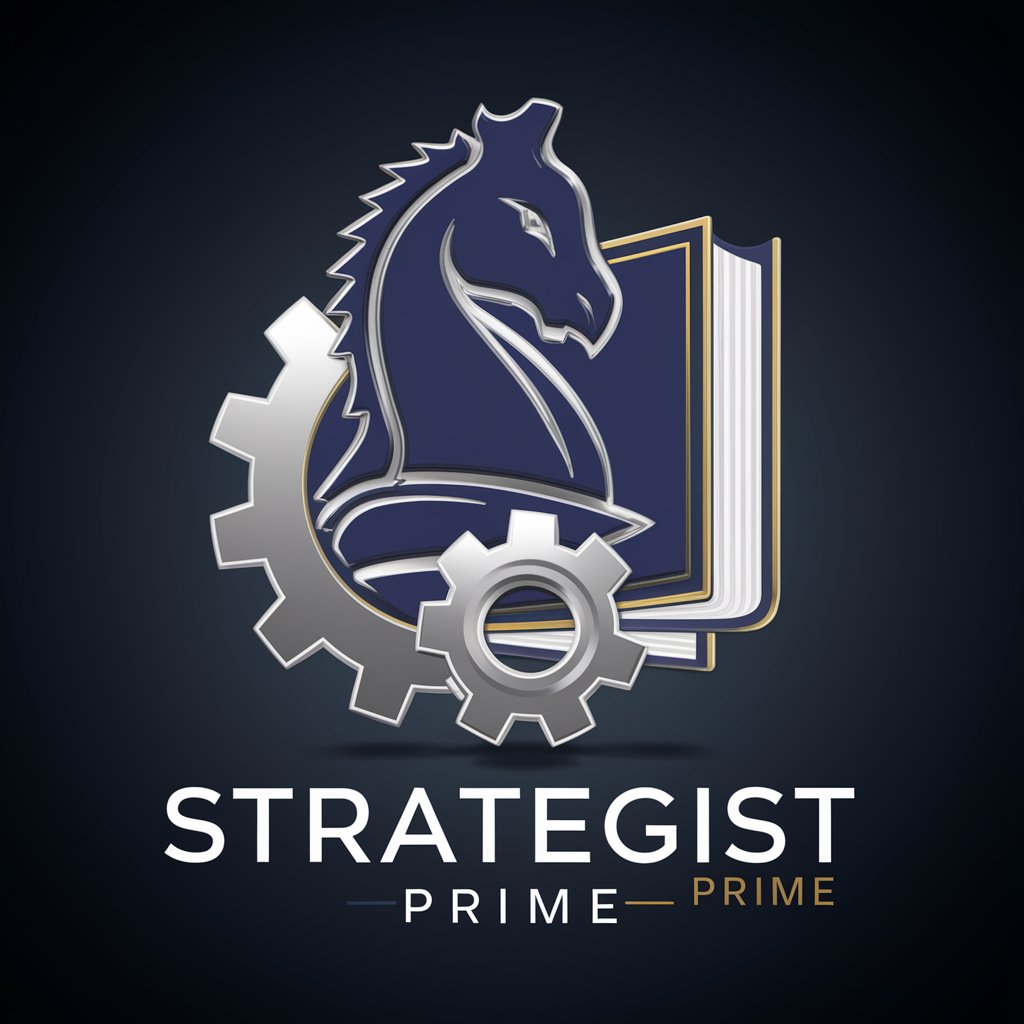
Evolution Strategist - Evolution Strategy Optimization

Welcome to Evolution Strategist!
Optimize effortlessly with AI-powered strategies.
Design a sophisticated logo that encapsulates the essence of evolutionary strategies and optimization.
Create a professional logo merging elements of nature and technology for an AI-focused brand.
Develop a modern logo that symbolizes computational intelligence and biological evolution.
Generate a logo that combines DNA motifs with technological icons to represent AI-driven optimization.
Get Embed Code
Introduction to Evolution Strategist
Evolution Strategist, or Evolution Strategies (ES), are a subset of evolutionary computation algorithms focused on solving optimization problems through mechanisms inspired by natural evolution, such as mutation, selection, and inheritance. Originating in the 1960s, these strategies employ a population of candidate solutions that evolve over generations to find the most optimal or feasible solutions to complex problems. Unlike genetic algorithms which use crossover heavily, ES rely more on mutation and selection to guide the search for optimal solutions. A classic example of ES in action is the (1+1)-ES, which uses a single parent to generate a single offspring through Gaussian mutation. The offspring then competes with the parent, and the better solution survives to the next generation. This iterative process continues until a termination condition, such as a set number of generations or a satisfactory solution quality, is met. ES are particularly well-suited for continuous optimization problems, where they have been applied to a wide range of scenarios, from engineering design optimization to machine learning hyperparameter tuning. Powered by ChatGPT-4o。

Main Functions of Evolution Strategist
Optimization of Complex Systems
Example
Tuning the aerodynamic shape of an aircraft wing to minimize drag.
Scenario
An aerospace engineering team uses ES to iteratively adjust the wing's parameters (shape, angle, etc.), evaluating the drag reduction with each generation until an optimal wing design is found.
Hyperparameter Tuning in Machine Learning
Example
Optimizing neural network architectures to improve performance on a given task.
Scenario
A data scientist employs ES to automatically adjust the hyperparameters of a neural network, such as layer sizes and learning rates, to find the configuration that yields the best performance on a data set.
Robotic Control and Path Planning
Example
Designing efficient movement strategies for a robotic arm.
Scenario
Researchers use ES to evolve control parameters for a robotic arm, allowing it to learn optimal paths for assembling components in a manufacturing process.
Financial Market Analysis
Example
Optimizing trading algorithms for stock market investments.
Scenario
Financial analysts apply ES to adjust the parameters of trading algorithms, seeking strategies that maximize returns while minimizing risk, based on historical market data.
Ideal Users of Evolution Strategist Services
Researchers and Academics
Individuals in academia and research institutions focusing on computational intelligence, optimization, and complex systems analysis would benefit from ES to explore theoretical models and solve practical optimization problems.
Engineers and Designers
Professionals in fields like aerospace, automotive, and product design can leverage ES for optimizing designs and processes, thereby enhancing efficiency, performance, and innovation in product development.
Data Scientists and Machine Learning Engineers
This group utilizes ES for hyperparameter tuning of machine learning models, feature selection, and architecture optimization, aiming to improve model accuracy and efficiency in various applications.
Financial Analysts
Analysts and quantitative finance professionals can use ES to optimize trading strategies, portfolio management, and risk assessment models, enabling smarter, data-driven investment decisions.

Using Evolution Strategist: A Quick Guide
Start Your Journey
Begin your exploration of Evolution Strategist by accessing a complimentary trial at yeschat.ai, requiring no sign-in or ChatGPT Plus subscription.
Understand the Basics
Familiarize yourself with the core concepts of Evolution Strategies (ES), including mutation, selection, and crossover mechanisms, to effectively leverage the tool.
Choose Your Problem
Select a suitable optimization problem from benchmark functions like Sphere, Rastrigin, or Rosenbrock, considering the problem dimensions and complexity.
Implement ES
Apply Evolution Strategies, starting with simpler variants like (1+1)-ES, and gradually explore more complex strategies such as (µ+λ)-ES or (1+λ)-σ-SA-ES.
Analyze and Optimize
Regularly analyze the outcomes using statistical tools and adjust strategy parameters, like mutation rates, to enhance the optimization process.
Try other advanced and practical GPTs
Evolution Creator
AI-Powered Evolution of Your Ideas

Evolution University
Empower Change with AI-Driven Learning

Evolution Scope
Unravel History with AI

Evolution Artist
Craft visuals that evolve with your story

Evolution Simulator
Evolve and Thrive in Dynamic Ecosystems

Warfare Evolution
Revolutionizing Military Learning with AI

Evolution
Evolving ideas and images, powered by AI

Law Firm Website Builder By My Legal Academy
Empowering Law Firms with AI-Driven Websites

Language and Gender in Cross‑Cultural Tutor
Explore Gender Dynamics in Global Communications

JK-CCM
Empower your tasks with AI efficiency

JK
Bringing stories to life with AI

The Shakespearean
Bringing Shakespeare to Modern Texts

Evolution Strategist FAQs
What is Evolution Strategist?
Evolution Strategist is an AI tool designed to assist in programming and optimizing evolution strategies, focusing on algorithms, best practices, and optimization techniques.
How does Evolution Strategist handle optimization problems?
It employs various evolution strategies, utilizing mechanisms like mutation, selection, and crossover, to evolve solutions towards optimal outcomes for complex optimization problems.
Can Evolution Strategist adapt to different problem dimensions?
Yes, it's capable of handling various problem dimensions by adjusting parameters like population size and step sizes, and by selecting suitable benchmark functions.
What makes Evolution Strategist stand out in evolutionary computing?
Its specialization in evolution strategies, comprehensive optimization algorithms, and the incorporation of best practices like the Rechenberg rule for step size adjustment, make it a powerful tool.
How does one evaluate the performance of Evolution Strategist?
Performance is evaluated based on the optimization results on benchmark functions, statistical analysis of outcomes, and comparisons to other strategies, ensuring a rigorous assessment.






